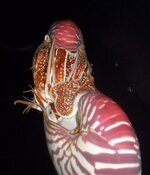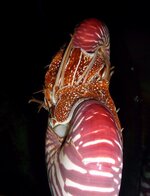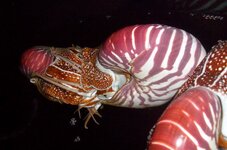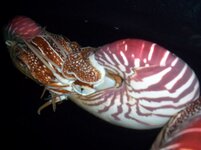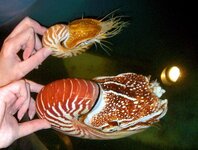- Joined
- Jan 19, 2007
- Messages
- 314
Hi all,
Here are some pictures of my nautiluses doing their thing.
I felt kind of rude taking the pictures while they were 'busy' - I admire their dedication, though, even with the flash they didn't stop!
In these pictures the male is on the right, or in the lower half - his tentacles are much thicker than the female's even though the body size is similar. I wonder if its sexual dimorphism to aid with grasping the female...
I've never seen copulation before so I was quite excited. I must say, it requires a certain type of delicate language to explain to people why they should drop what they're doing and come and look at your animals having sex.....
Here are some pictures of my nautiluses doing their thing.
I felt kind of rude taking the pictures while they were 'busy' - I admire their dedication, though, even with the flash they didn't stop!
In these pictures the male is on the right, or in the lower half - his tentacles are much thicker than the female's even though the body size is similar. I wonder if its sexual dimorphism to aid with grasping the female...
I've never seen copulation before so I was quite excited. I must say, it requires a certain type of delicate language to explain to people why they should drop what they're doing and come and look at your animals having sex.....

